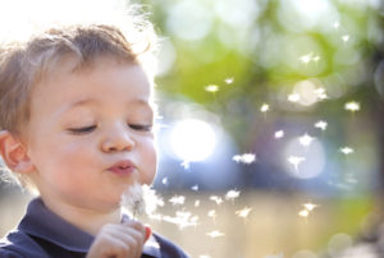
 “Mindfulness means paying attention, in a particular way, on purpose, in the present moment, and non-judgmentally.” ~ Jon Kabat-Zinn
“Mindfulness means paying attention, in a particular way, on purpose, in the present moment, and non-judgmentally.” ~ Jon Kabat-Zinn
Mindfulness. It’s popping up everywhere! The reason? We now have the ability to study the brain like we haven’t before due to modern technology, and the results are in. Mindfulness is good for your health, your stress level, your relationships, healing trauma, giving birth, developing compassion for others, developing self-compassion, communicating clearly, and living a happier life! For more information on the neuroscience behind mindfulness meditation, The Buddha Brain by Rick Hanson is an excellent resource.
Even though most of us are familiar with mindfulness, figuring out how to teach it to our children can be puzzling. After all, they don’t seem too interested in sitting quietly and observing their breath for 20 minutes a day! The good news is mindfulness can be practiced during any activity, and, children are actually doing it naturally more so than adults. They tend to be absorbed in what they are doing and noticing details, rather than distracted by non-stop thinking. If you would like to bring the practice of mindfulness to your children, here are a few suggestions of things you can do today!
1. Go for a sense walk in nature or in your neighborhood.
Explain to your child that you are going to play a game to feed your senses, as they are hungry! The object of the game is to see how many things you can notice through seeing, hearing touching, and smelling. It will be much easier to notice things if you are silent during the observation times. The amount of time you spend per sense will depend on the age of the child; I would recommend about 2-5 minutes. In silence, notice what you see, then report back to each other your observations. Then walk in silence for a few minutes, noticing what you hear. Again, share your observations with each other. Then walk in silence and spend a few minutes touching things. Share your findings. Lastly, what do you smell? Compare notes. Did you observe the same things? Were some different? Is there a special thing your child really wants to show you? Go look and notice all the details- like you were seeing it for the first time.
2. Play Musical Instruments.
Choose 3-5 instruments you have at home such as a rattle, shaker, tambourine, bell, drum, harmonica, whistle, or any noisemaker. If you don’t have actual instruments it’s fine to make them by putting rocks, sand, dry beans or uncooked pasta in a tight container, using an empty cylinder oatmeal box as a drum, tapping a spoon on a glass, etc… (You can have your child help make the instruments too!) Then have your child close his/her eyes. Tell him/her that you are going to play each instrument, and their job is to listen closely and see if he/she can tell you the correct order you played the instruments. Then, switch up the order and do it again! If your child struggles to get the order correct, eliminate an instrument to make it a little easier. You can add one back in once he/she gets the hang of it!
3. Introduce the idea of mindfulness meditation.
There are a few books out there for children, including Moody Cow Meditates and Frog’s Breathtaking Speech. Moody Cow Meditates includes instructions for how to make a mind jar which is a glass jar filled with water and glitter, the glitter representing our thoughts and emotions. You shake the jar, watch the glitter swirl, and then notice how the glitter eventually settles- mirroring the impact mindfulness meditation has on thoughts and emotions. Frog’s Breathtaking Speech introduces yoga poses that include breathing techniques for managing anger, anxiety, and tension in a fun way. In addition to reading books, carve out 2-5 minutes to sit together as a family each day and feel the breath. If you want you can create a special place to do this- the corner of a room is fine- and have every member of the family place a special object (photo, object from nature, etc.) on a small table or in a special bowl. Try to let this be a relaxed experience- if your child gets up and begins doing other things, continue with your practice as best you can and invite your child to return and join you. Modeling your own practice- even if your child is not interested- will demonstrate that you value it.
Looking for more mindfulness resources? Check out my website: http://www.cultivateconfidence.com

